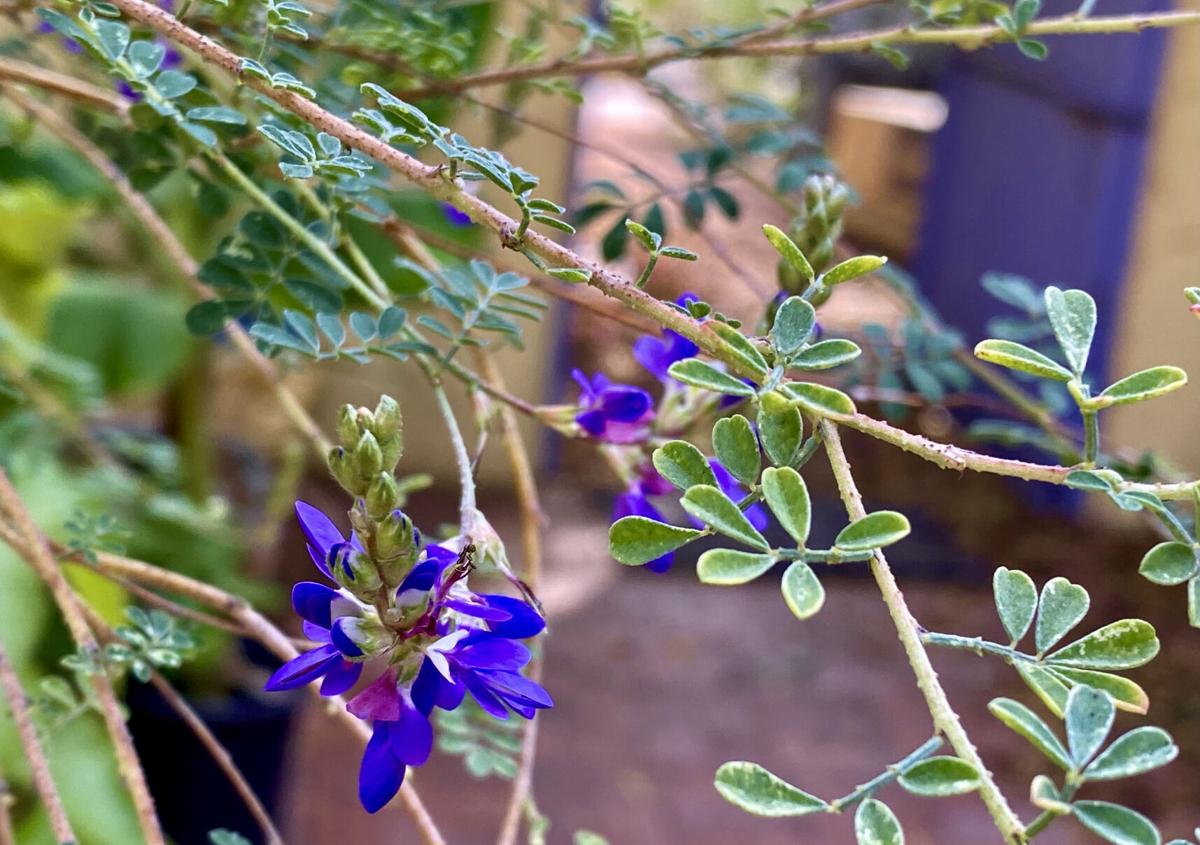Black dalea (Dalea frutescens) is an attractive, native smaller shrub which can flower from late summer into the late fall. It can also be referred to as the black indigo bush. The plant is native to the southwest plains, usually to the north and east of us, but can be considered a near-native as it grows in the Chihuahuan desert.
The flowers, which can also be present in the spring, are a big draw for bees and butterflies and are a lovely dark violet color. They are a great nectar source in the late fall when not many other plants are blooming. It’s also a larval source for the dogface butterfly, which despite its name is a beautiful insect.
The leaves are fine-textured and dark green, and the plant has an airy, delicate appearance that belies its drought-tolerant and hardy nature. It grows relatively fast, especially with plentiful sun and some supplemental water.
The shrub is thornless, and grows about 3 feet tall and usually about half as wide, although it can also spread out depending on sun exposure. It does well in hot, sunny areas, and needs well-draining soil. During very hot summers, supplemental waterings can prevent leaf drop but are not necessary. It’s also very cold-tolerant (to at least 15 F and possibly as low as 0 F), so it’s a great plant for areas that will potentially be somewhat neglected. However, be aware that deer and bunnies will browse this plant.
It may lose some or all of its leaves in the winter, and can be trimmed back in early spring, which will encourage it to grow thicker. However, they do not require pruning. Growing it in part shade will result in leggy plants, but again, these can be pruned at the end of winter so they regrow more densely.
In general, the less you do with this plant the better. If you overwater it, it will tend to get leggy and will produce fewer flowers. Once established, you can pretty much forget it’s there — except when the gorgeous violet flowers bloom.
It's easy to throw your pumpkins in the trash after Halloween, but consider these alternative options of what to do with your pumpkins before discarding them in a landfill.





